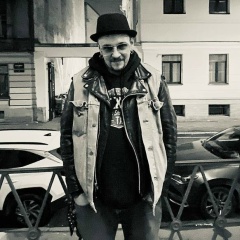"В СССР было принято рассматривать белогвардейцев как врагов советской власти и живописать их зверства.
В постперестроечную эпоху в обиход вошел термин «красный террор», которым принято обозначать большевистскую политику в отношении дворянства, буржуазии и прочих «чуждых классов».
А как же «белый террор»?
Имел ли он место в принципе?
Расстрел у Кремля
«Белый террор» - достаточно условный термин, которым современные историки обозначают репрессивные меры, направленные против большевиков и их сторонников.
Как правило, насильственные акты носили спонтанный, неорганизованный характер, но в некоторых случаях они были санкционированы временными военными и политическими властями.
Первый официально зафиксированный акт «белого террора» состоялся 28 октября 1917 года. Юнкера, освобождавшие от восставших Московский Кремль, выстроили безоружных солдат 56-го запасного полка, перешедших на сторону большевиков, у памятника Александру II, якобы с целью проверки, и открыли по ним огонь из ружей и пулеметов. В результате этой акции погибло около 300 человек.
Корниловский «ответ»
Считается, что один из белогвардейских «вождей», генерал Л.Г. Корнилов, якобы отдал приказ не брать пленных, а расстреливать на месте. Но никакого официального распоряжения по этому поводу обнаружено так и не было. Корниловец А.Р. Трушнович впоследствии рассказывал, что, в отличие от большевиков, которые объявили террор законодательно, идейно его оправдывая, армия Корнилова выступала за законность и правопорядок, поэтому она избегала реквизиций имущества и излишних кровопролитий. Однако случалось и так, что обстоятельства вынуждали корниловцев отвечать жестокостью на жестокость со стороны врагов. Например, в районе станицы Гниловской под Ростовом произошло убийство большевиками нескольких раненых корниловских офицеров и сестры милосердия, которая их сопровождала. В районе Лежанки казачий разъезд большевики захватили в плен и заживо закопали в землю. Там же они вспороли живот местному священнику и за кишки проволокли его по всей станице. Многие близкие корниловцев оказались замучены большевиками, и тогда они стали убивать пленных…
От Поволжья до Сибири
Летом 1918 года к власти в Поволжье пришли сторонники Учредительного собрания.
Белогвардейцы учинили расправу над многими партийно-советскими работниками.
На территории, находившейся под контролем Комуча, создавались охранные структуры, военно-полевые суды, для казни большевистски настроенных лиц использовались так называемые «баржи смерти».
В сентябре-октябре были жестоко подавлены рабочие восстания в Казани и Иващенково.
На севере России 38 тысяч человек попали в архангельскую тюрьму по обвинению в большевистской деятельности.
Около 8 тысяч арестантов расстреляли, еще более тысячи скончались в стенах тюрьмы.
В том же 1918 году около 30 тысяч человек стали жертвами «белого террора» на территориях, находившихся под контролем генерала П.Н. Краснова.
Вот строки из приказа коменданта Макеевского района от 10 ноября 1918 года: «Рабочих арестовывать запрещаю, а приказываю расстреливать или вешать; Приказываю всех арестованных рабочих повесить на главной улице и не снимать три дня».
В ноябре 1918 года адмиралом А.В. Колчаком активно проводилась политика высылки и расстрелов сибирских эсеров.
Член ЦК партии правых эсеров Д.Ф. Раков писал: «Омск просто замер от ужаса… Убитых... было бесконечное множество, во всяком случае, не меньше 2500 человек. Целые возы трупов провозили по городу, как возят зимой бараньи и свиные туши…».
Генерала А.И. Деникина обвиняли в слишком мягком обращении с большевиками. Тем не менее, существует подписанный им приказ № 7 от 14 (27) августа 1918 года, согласно которому «всех лиц, обвиняемых в способствовании или благоприятствовании войскам или властям советской республики в их военных или в иных враждебных действиях против Добровольческой армии, а равно за умышленное убийство, изнасилование, разбои, грабежи, умышленное зажигательство или потопление чужого имущества» предписывалось предавать «военно-полевым судам войсковой части Добровольческой армии, распоряжением военного губернатора».
Как бы то ни было, нельзя считать «красных» плохими а «белых» исключительно хорошими, или наоборот – кому как нравится… Любая война – это прежде всего насилие. А гражданская война – это страшная трагедия, в которой сложно отыскать правых и виноватых…
Источник: Сколько было жертв «белого террора» в Гражданскую войну
© Русская Семерка russian7.ru
В постперестроечную эпоху в обиход вошел термин «красный террор», которым принято обозначать большевистскую политику в отношении дворянства, буржуазии и прочих «чуждых классов».
А как же «белый террор»?
Имел ли он место в принципе?
Расстрел у Кремля
«Белый террор» - достаточно условный термин, которым современные историки обозначают репрессивные меры, направленные против большевиков и их сторонников.
Как правило, насильственные акты носили спонтанный, неорганизованный характер, но в некоторых случаях они были санкционированы временными военными и политическими властями.
Первый официально зафиксированный акт «белого террора» состоялся 28 октября 1917 года. Юнкера, освобождавшие от восставших Московский Кремль, выстроили безоружных солдат 56-го запасного полка, перешедших на сторону большевиков, у памятника Александру II, якобы с целью проверки, и открыли по ним огонь из ружей и пулеметов. В результате этой акции погибло около 300 человек.
Корниловский «ответ»
Считается, что один из белогвардейских «вождей», генерал Л.Г. Корнилов, якобы отдал приказ не брать пленных, а расстреливать на месте. Но никакого официального распоряжения по этому поводу обнаружено так и не было. Корниловец А.Р. Трушнович впоследствии рассказывал, что, в отличие от большевиков, которые объявили террор законодательно, идейно его оправдывая, армия Корнилова выступала за законность и правопорядок, поэтому она избегала реквизиций имущества и излишних кровопролитий. Однако случалось и так, что обстоятельства вынуждали корниловцев отвечать жестокостью на жестокость со стороны врагов. Например, в районе станицы Гниловской под Ростовом произошло убийство большевиками нескольких раненых корниловских офицеров и сестры милосердия, которая их сопровождала. В районе Лежанки казачий разъезд большевики захватили в плен и заживо закопали в землю. Там же они вспороли живот местному священнику и за кишки проволокли его по всей станице. Многие близкие корниловцев оказались замучены большевиками, и тогда они стали убивать пленных…
От Поволжья до Сибири
Летом 1918 года к власти в Поволжье пришли сторонники Учредительного собрания.
Белогвардейцы учинили расправу над многими партийно-советскими работниками.
На территории, находившейся под контролем Комуча, создавались охранные структуры, военно-полевые суды, для казни большевистски настроенных лиц использовались так называемые «баржи смерти».
В сентябре-октябре были жестоко подавлены рабочие восстания в Казани и Иващенково.
На севере России 38 тысяч человек попали в архангельскую тюрьму по обвинению в большевистской деятельности.
Около 8 тысяч арестантов расстреляли, еще более тысячи скончались в стенах тюрьмы.
В том же 1918 году около 30 тысяч человек стали жертвами «белого террора» на территориях, находившихся под контролем генерала П.Н. Краснова.
Вот строки из приказа коменданта Макеевского района от 10 ноября 1918 года: «Рабочих арестовывать запрещаю, а приказываю расстреливать или вешать; Приказываю всех арестованных рабочих повесить на главной улице и не снимать три дня».
В ноябре 1918 года адмиралом А.В. Колчаком активно проводилась политика высылки и расстрелов сибирских эсеров.
Член ЦК партии правых эсеров Д.Ф. Раков писал: «Омск просто замер от ужаса… Убитых... было бесконечное множество, во всяком случае, не меньше 2500 человек. Целые возы трупов провозили по городу, как возят зимой бараньи и свиные туши…».
Генерала А.И. Деникина обвиняли в слишком мягком обращении с большевиками. Тем не менее, существует подписанный им приказ № 7 от 14 (27) августа 1918 года, согласно которому «всех лиц, обвиняемых в способствовании или благоприятствовании войскам или властям советской республики в их военных или в иных враждебных действиях против Добровольческой армии, а равно за умышленное убийство, изнасилование, разбои, грабежи, умышленное зажигательство или потопление чужого имущества» предписывалось предавать «военно-полевым судам войсковой части Добровольческой армии, распоряжением военного губернатора».
Как бы то ни было, нельзя считать «красных» плохими а «белых» исключительно хорошими, или наоборот – кому как нравится… Любая война – это прежде всего насилие. А гражданская война – это страшная трагедия, в которой сложно отыскать правых и виноватых…
Источник: Сколько было жертв «белого террора» в Гражданскую войну
© Русская Семерка russian7.ru
“In the USSR, it was customary to view the White Guards as enemies of the Soviet regime and to depict their atrocities.
In the post-perestroika era, the term "Red Terror" came into use, which is customary to denote the Bolshevik policy towards the nobility, the bourgeoisie and other "alien classes."
But what about the "white terror"?
Did it take place in principle?
Shooting near the Kremlin
“White Terror” is a rather conventional term used by modern historians to denote repressive measures directed against the Bolsheviks and their supporters.
As a rule, violent acts were spontaneous, disorganized, but in some cases they were sanctioned by the temporary military and political authorities.
The first officially recorded act of "white terror" took place on October 28, 1917. The cadets, who were liberating the Moscow Kremlin from the rebels, lined up unarmed soldiers of the 56th reserve regiment, who had gone over to the side of the Bolsheviks, at the monument to Alexander II, ostensibly for the purpose of checking, and opened fire on them from rifles and machine guns. As a result of this action, about 300 people were killed.
Kornilov's "answer"
It is believed that one of the White Guard "leaders", General L.G. Kornilov allegedly gave the order not to take prisoners, but to shoot them on the spot. But no official order on this matter was found. A.R. Kornilovets Trushnovich later said that, unlike the Bolsheviks, who declared terror by law, ideologically justifying it, Kornilov's army advocated law and order, so it avoided requisitioning property and unnecessary bloodshed. However, it also happened that circumstances forced the Kornilovites to respond with cruelty to cruelty on the part of their enemies. For example, in the area of the village of Gnilovskaya near Rostov, the Bolsheviks killed several wounded Kornilov officers and a sister of mercy who accompanied them. In the area of Lezhanka, a Cossack patrol was captured by the Bolsheviks and buried alive in the ground. In the same place they ripped open the stomach of the local priest and dragged him by the guts throughout the village. Many relatives of the Kornilovites were tortured to death by the Bolsheviks, and then they began to kill prisoners ...
From the Volga region to Siberia
In the summer of 1918, supporters of the Constituent Assembly came to power in the Volga region.
The White Guards perpetrated reprisals against many Party and Soviet workers.
On the territory under the control of Komuch, security structures, martial courts were created, so-called "death barges" were used to execute Bolshevik-minded persons.
In September-October, workers' uprisings in Kazan and Ivaschenkovo were brutally suppressed.
In the north of Russia, 38 thousand people were imprisoned in Arkhangelsk on charges of Bolshevik activities.
About 8 thousand prisoners were shot, more than a thousand died within the walls of the prison.
In the same 1918, about 30 thousand people became victims of the "white terror" in the territories under the control of General P.N. Krasnova.
Here are the lines from the order of the commandant of the Makeyevsky region of November 10, 1918: “I forbid to arrest the workers, but I order them to be shot or hanged; I order all arrested workers to be hanged on the main street and not filmed for three days. "
In November 1918, Admiral A.V. Kolchak actively pursued a policy of expulsion and execution of the Siberian SRs.
Member of the Central Committee of the Party of Right Social Revolutionaries D.F. Rakov wrote: “Omsk simply froze with horror ... The killed ... there were an infinite number, at least not less than 2500 people. Whole carts of corpses were transported around the city, as they carry in winter lamb and pork carcasses ... ”.
General A.I. Denikin was accused of being too lenient with the Bolsheviks. Nevertheless, there is an order No. 7 of August 14 (27), 1918, signed by him, according to which “all persons accused of aiding or aiding the troops or the authorities of the Soviet republic in their military or other hostile actions against the Volunteer Army, as well as for premeditated murder, rape, robbery, robbery, deliberate ignition or drowning of someone else's property "was ordered to be handed over to" military field courts of the military unit of the Volunteer Army, by order of the military governor. "
Be that as it may, the “reds” cannot be considered bad and the “whites” exceptionally good, or vice versa - as you like ... Any war is, first of all, violence. And the civil war is a terrible tragedy in which it is difficult to find the right and the guilty ...
Source: How many victims of the "white terror" were in the Civil War
© Russian Seven russian7.ru
In the post-perestroika era, the term "Red Terror" came into use, which is customary to denote the Bolshevik policy towards the nobility, the bourgeoisie and other "alien classes."
But what about the "white terror"?
Did it take place in principle?
Shooting near the Kremlin
“White Terror” is a rather conventional term used by modern historians to denote repressive measures directed against the Bolsheviks and their supporters.
As a rule, violent acts were spontaneous, disorganized, but in some cases they were sanctioned by the temporary military and political authorities.
The first officially recorded act of "white terror" took place on October 28, 1917. The cadets, who were liberating the Moscow Kremlin from the rebels, lined up unarmed soldiers of the 56th reserve regiment, who had gone over to the side of the Bolsheviks, at the monument to Alexander II, ostensibly for the purpose of checking, and opened fire on them from rifles and machine guns. As a result of this action, about 300 people were killed.
Kornilov's "answer"
It is believed that one of the White Guard "leaders", General L.G. Kornilov allegedly gave the order not to take prisoners, but to shoot them on the spot. But no official order on this matter was found. A.R. Kornilovets Trushnovich later said that, unlike the Bolsheviks, who declared terror by law, ideologically justifying it, Kornilov's army advocated law and order, so it avoided requisitioning property and unnecessary bloodshed. However, it also happened that circumstances forced the Kornilovites to respond with cruelty to cruelty on the part of their enemies. For example, in the area of the village of Gnilovskaya near Rostov, the Bolsheviks killed several wounded Kornilov officers and a sister of mercy who accompanied them. In the area of Lezhanka, a Cossack patrol was captured by the Bolsheviks and buried alive in the ground. In the same place they ripped open the stomach of the local priest and dragged him by the guts throughout the village. Many relatives of the Kornilovites were tortured to death by the Bolsheviks, and then they began to kill prisoners ...
From the Volga region to Siberia
In the summer of 1918, supporters of the Constituent Assembly came to power in the Volga region.
The White Guards perpetrated reprisals against many Party and Soviet workers.
On the territory under the control of Komuch, security structures, martial courts were created, so-called "death barges" were used to execute Bolshevik-minded persons.
In September-October, workers' uprisings in Kazan and Ivaschenkovo were brutally suppressed.
In the north of Russia, 38 thousand people were imprisoned in Arkhangelsk on charges of Bolshevik activities.
About 8 thousand prisoners were shot, more than a thousand died within the walls of the prison.
In the same 1918, about 30 thousand people became victims of the "white terror" in the territories under the control of General P.N. Krasnova.
Here are the lines from the order of the commandant of the Makeyevsky region of November 10, 1918: “I forbid to arrest the workers, but I order them to be shot or hanged; I order all arrested workers to be hanged on the main street and not filmed for three days. "
In November 1918, Admiral A.V. Kolchak actively pursued a policy of expulsion and execution of the Siberian SRs.
Member of the Central Committee of the Party of Right Social Revolutionaries D.F. Rakov wrote: “Omsk simply froze with horror ... The killed ... there were an infinite number, at least not less than 2500 people. Whole carts of corpses were transported around the city, as they carry in winter lamb and pork carcasses ... ”.
General A.I. Denikin was accused of being too lenient with the Bolsheviks. Nevertheless, there is an order No. 7 of August 14 (27), 1918, signed by him, according to which “all persons accused of aiding or aiding the troops or the authorities of the Soviet republic in their military or other hostile actions against the Volunteer Army, as well as for premeditated murder, rape, robbery, robbery, deliberate ignition or drowning of someone else's property "was ordered to be handed over to" military field courts of the military unit of the Volunteer Army, by order of the military governor. "
Be that as it may, the “reds” cannot be considered bad and the “whites” exceptionally good, or vice versa - as you like ... Any war is, first of all, violence. And the civil war is a terrible tragedy in which it is difficult to find the right and the guilty ...
Source: How many victims of the "white terror" were in the Civil War
© Russian Seven russian7.ru
У записи 8 лайков,
7 репостов,
1664 просмотров.
7 репостов,
1664 просмотров.
Эту запись оставил(а) на своей стене Максим Козырев




























